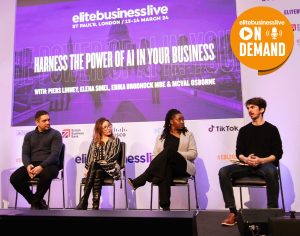Once seen primarily as a gaming platform, and occasionally as a marketing gimmick for big brands, has COVID-19 helped accelerate adoption of this ‘futuristic’ tech? Graham Lamb, Virtual Technologies Architect for Planet One Reality explores.
Pre-pandemic, predictions of the value of the consumer VR market was USD$16 billion by 2022, but predictions of the total value of the market were much harder to pin down. The challenge was how to value the size and scale of a sector when as yet, there were few tangible, quantifiable examples of applications that are effective, adoptable, and relevant. What impact will VR in the workplace have on the sector size for example, if it has any at all? Research from the International Data Corporation (IDC) released at the very start of 2020, sought to quantify the potential for VR application in the workplace, and cited that potentially, the commercial sector will account for 80% of global spend on AR/VR products and services by 2022, significantly higher than the personal device market and applications. So what effect has the pandemic had?
I’ll be yet another expert highlighting that COVID-19 has changed the world as we know it, no surprise there, but what change has it actually made? Typically, Virtual Reality (pre-2020) was all about enhancing what already existed and making experiences better, more interactive, and more engaging. It was if anything a luxury. VR at exhibitions made seemingly boring corridors into interactive playgrounds for the visitor, while the novelty of a VR rollercoaster was entertaining for the many. It was largely novelty that drove adoption rather than any significant competitive advantage and it was this that has stymied the historic rate of adoption. I have long extolled the virtues of the tech and indeed have implemented a number of pretty cool applications, but their size and scale were nothing compared to the projects we are working with now. Why? COVID-19 has challenged the world to think differently.
So, what does the VR landscape look like now?
In a word, unstoppable. I feel like I have a front row seat at the dawn of a new era when the response to COVID-19 challenges has freed the world to think of things afresh. At the start of 2020, VR was a stable, growing, but somewhat fledgling industry, at least by corporate standards, but now it is becoming one of the fastest growing tech solutions for businesses and is seeing investment on an unprecedented scale. Think about it: when you cannot actually interact face-to-face, how can VR fill the void?
This growth is being driven initially by a few core sectors; those seeking to replace significant lost revenues or sales opportunities that they are reliant on every year. The healthcare / pharma sector is one, retail is another, and travel a third.
VR in the healthcare sector
Arguably the most mature of the three sectors, VR in healthcare has perhaps the most diverse applications already in use and development. Many businesses were already developing VR-first applications before the pandemic, and the pandemic has simply served to accelerate this. Applications include: pain management; education and training; surgery practice; patient care management; rehabilitation and therapy procedures; and post-traumatic stress disorder (PTSD) treatments. Examples include product familiarisation in infection control processes; post-stroke therapy to improve arm and hand movement; mindfulness applications to help treat depression; and practice for complex medical processes during surgery. Indeed, a study by Seymour et al. into the use of VR surgical simulation for practice purposes found that as well as being faster, VR-trained individuals were five times less likely to injure the tissue (in this case a gallbladder) and six times less likely to make other impactful mistakes.
The pandemic has provided a new focus for VR in the sector too: knowledge transfer. Traditionally, such a high value sector sees an annual roster of events happening globally including conferences to introduce clinical teams to new Medical Device and Pharma products. The event market is huge, but lack of face-to-face has significantly dampened the opportunities. In response, many of the world’s largest medical product providers have changed tack, creating extensive virtual environments to mimic the in-person experience, and even enhance it with features and training applications not usually on offer in these spaces.
VR for retailers
It is now believed that retailers will have spent USD$1.5 billion developing VR solutions by the end of 2020, in a bid to provide engaging sales opportunities. L’Oreal, Kendra Scott and Suitsupply are three brands who have specifically introduced virtual tools to engage with shoppers and it is likely that even if we return to ‘normal’ the potential of VR applications will see adoption continue to accelerate. For L’Oreal, they’re bringing products to the masses with a new Snap desktop AR Lens, allowing their customers to ‘enhance’ looks with L’Oreal products, for use with video-conferencing platforms. It isn’t L’Oreal’s first foray into the world of AR, but it is perhaps their most effective with daily downloads of Snap camera increasing 30-fold. Kendra Scott and Suitsupply’s focus have been more on virtual wardrobes, offering their customers the chance to try on physical products before they buy. The potential of these applications, blending in-store and online experiences, is seemingly endless and it is this that will drive long-term tech demand.
VR in travel
Perhaps the least tangible application, but the one with the biggest potential, VR adoption in the travel sector is focussing on personal VR tech to help plug the gap while travel is limited. With the potential for paid-for applications and ‘travel’ experiences from the comfort of your own home, there are a few places which are already considering how to provide a ‘virtual holiday’. There are few applications which merit a mention yet, but I believe in the next three to six months, we will see the first releases to really get excited about!
So, what about the workplace?
While it has yet to be quantified statistically, Covid-19 has significantly accelerated the growth of VR tech adoption and the workplace is likely to be close behind. Home working has already encouraged and fast-tracked the adoption of digital training solutions across the globe, and as a VR business, we have seen a renewed sense of urgency in enquiries for VR technology for remote training, since the start of Covid-19. As it became obvious that things will not be returning to ‘normal’ anytime soon, companies have seemingly adopted a new open-minded attitude to the vast potential of remote connectivity.
Indeed, a report by Mojo Vision has sought to quantify worker attitudes to VR and the results are somewhat surprising. While 75% of those surveyed have never used a VR headset, 78% of them say they are open to their employers adopting this tech. The report also quantifies that more than 50% of workers expect AR/VR devices to be as common as smartphones within the next ten years, possibly sooner if the far-reaching impact of COVID-19 encourages continued home working. I for one am exceedingly excited by the prospect and believe that a retrospective look back in 2030 will see VR technology as one of the most influential changes of the decade, and will establish COVID-19 as the driver for its growth.
“
Share via:


















































